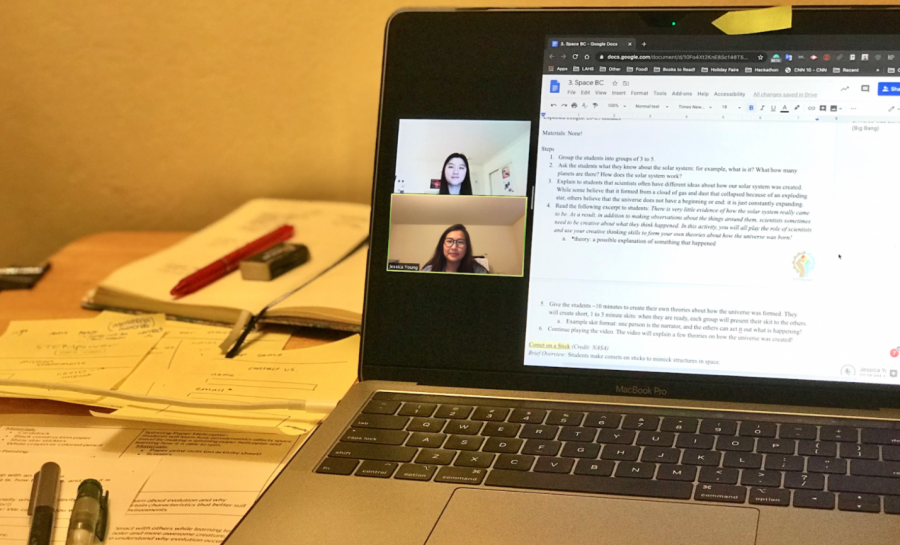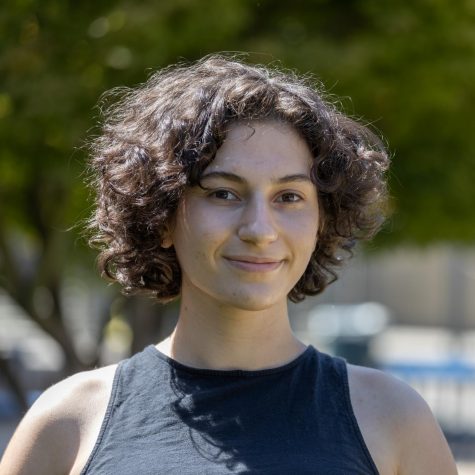Women in STEM: virtually empowering youth through education
During shelter-in-place, Women in STEM (WiSTEM) club officer and junior Jessica Young (bottom) founded STEMpower, a joint education initiative with the local YMCA. Along with her fellow officers and juniors May Jiang and Allison Hong (top), the three hope to provide children at the El Camino Hospital with a STEM enrichment opportunity.
May 11, 2020
With the shelter-in-place order, Women in STEM (WiSTEM) club officers and juniors Jessica Young, May Jiang and Allison Hong decided to get creative and find a way to help those fighting on the front-lines.
Initially founded by Jessica, STEMpower is a joint education initiative with the local YMCA to provide interactive online lessons for the children of El Camino Hospital’s healthcare workers. Through this project, the three hope to spread their passion for STEM.
The STEMpower classes are not just an enrichment opportunity for children, but they are also geared towards building confidence in young learners and ensuring that everyone feels accepted by their peers.
Prior to the pandemic, WiSTEM strived to inspire the curiosity of Almond Elementary School students by leading educational introductory lessons to prominent STEM subjects. Due to the COVID-19 pandemic, the club has now reshaped its objective to focus on virtual and safe learning.
Although the team used to teach classes in-person, during quarantine, they instead provide the YMCA child-care supervisors with all the resources they need to teach the lessons. The kit includes instructional videos, worksheets and activity plans.
“The main purpose of these lessons is to be hands-on,” Allison added. “In elementary school classes, a lot of the children’s work is basically worksheets or simple lecturing. Here we find resources for them to do hands-on activities, so it’s a real-world experience.”
Ranging from bird-beak simulations to recycling races, STEMpower’s interactive activities aim to teach the children critical thinking. After the activities, the children summarize their newfound knowledge and ask application questions during a full class discussion.
Jessica, May and Allison have the challenge of planning lessons of varying complexity for the different age groups of children. For example, for their animal-themed lessons, they included a simplified evolution curriculum aimed for children aged three to five in the activity package to ensure inclusivity for all learning levels. Every activity is specifically tailored to the children’s age groups and the skills they have learned through previous education.
They hope to expand the service towards other parts of the community in order to maximize the impact of the workshop series.
“It’s important that we are bringing STEM activities to programs like this virtually so that we can teach younger generations that learning doesn’t stop just because you cannot go to school,” May said.
The three leaders encourage students who are looking to make a difference in the community to be sincere, enthusiastic and passionate about their specific contribution.
“The first couple of weeks of quarantine were a struggle for me because I was lost on what to do while everyone else was helping out,” May said. “I’ve learned that things eventually grow organically, and you don’t have to push yourself to do things unless you truly believe in them. Now’s the time to find something you’re passionate about and chase it.”
To learn more about STEMpower, visit stempowerus.org.




